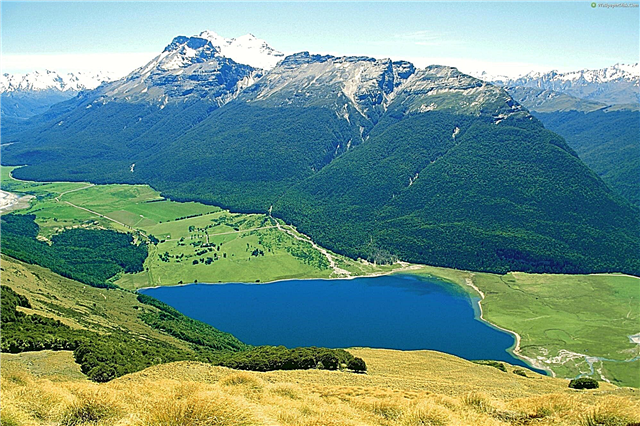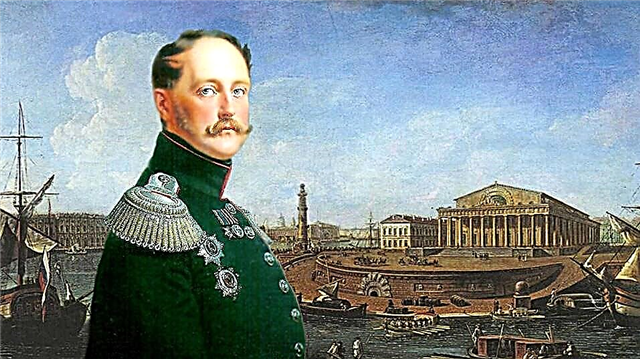Penguins became famous in Europe in the 15th - 16th centuries. But in those days, the main purpose of sea travel was profit, so the clumsy creatures were treated as another exotic. Moreover, medieval travelers to distant countries described such creatures that some half-fish, half-bird did not cause enthusiasm.
Systematic studies of penguins began only in the 19th century, when people began to send scientific expeditions to distant seas. Then the classification of penguins appeared, for the first time their structure and habits were described. Penguins began to appear in European zoos.

World fame came to penguins in the second half of the twentieth century, when these birds became fashionable heroes of comics and cartoons. Gradually, penguins gained a reputation as fearless but good-natured creatures, clumsy on land and agile in the water, feeding on fish and touchingly caring for children.

Almost everything in this description is true, but, as always, the devil is in the details. Penguins are outwardly good-natured, at least to humans. However, their character is far from angelic, they deftly fight with their powerful beaks, and may well attack a larger animal in a group. Caring for children is due to the production of a special hormone. When the hormone ends, so does child care. Sometimes taking care of children reaches the point that adult penguins abduct someone else's cub.
However, as one of the English researchers rightly noted, penguins are not people, and it is simply stupid to approach their behavior with human standards. Penguins are representatives of the animal world, and their instincts have been developed for millennia.
1. Penguins live only in the Southern Hemisphere and at fairly high latitudes. However, it would be a misconception to believe that they live exclusively among ice and cold sea water. Galapagos penguins living on the islands of the same name feel quite comfortable at average water temperatures of +22 - + 24 ° С and air temperatures between +18 and + 24 ° С. Penguins also live on the rather warm coasts of Australia, New Zealand, South Africa, the islands of the Indian Ocean and practically on the entire Pacific coast of South America.

Australian penguins
2. Natural selection in penguins is most direct and unambiguous. The penguins who have got to their feet set off on a "free swimming" - an independent life. After a year or two, they appear in the colony for several days, then their visits become longer, and only after proving that they were able to survive in the harsh conditions, the sexually mature penguins finally settle in the colony. Thus, only young people who have managed to feed themselves and escape from predators are allowed to bear children.

3. Evolution has taught penguins to maintain salt water balance. For almost all animals on Earth, such a water diet would be fatal. Penguins filter salt out of the water through special glands in the eye area and bring it out through their beak.
4. Due to monotonous food for millions of years of evolution, penguins have atrophied receptors for two of the four basic tastes - they do not feel bitterness and sweetness. But they distinguish between acid and salinity.

5. A small flock of killer whales - the worst enemies of dolphins - is capable of keeping thousands of penguin colonies on the shore. Flightless birds sense the presence of killer whales in the water near the coast and do not dare to dive for food. Even when the killer whales, losing patience, swim away, the penguins wait a long time, and then send the daredevil into the water alone to make sure there are no rival predators.

The scout went
6. The expedition of Russian sailors Thaddeus Bellingshausen and Mikhail Lazarev, who discovered Antarctica, simultaneously discovered the Emperor penguins - the largest species of black and white inhabitants of Antarctica. In principle, getting to Antarctica and not noticing creatures up to 130 cm tall and weighing up to 50 kg would be problematic, especially since penguins live in coastal areas. Lieutenant Ignatiev with a group of sailors, without fear of ecologists who did not exist then, killed one of the penguins and brought him to the ship. Everyone immediately appreciated the skin as an excellent decoration, and stones were found in the stomach of the unlucky bird, indicating that the earth was somewhere nearby.

F. Bellingshausen - head of the Russian polar expedition
7. In March 2018, Latvian scientists who worked in Antarctica at the Ukrainian station “Akademik Vernadsky” complained that penguins were stealing instruments and tools from them for sampling Antarctic soil. Considering the fact that with their waddling gait they can reach a maximum speed of 6 km / h, and the average person moves with a normal step at a slightly lower speed, two equally probable conclusions can be drawn. Either Latvian scientists have encountered a new species of walking penguins, or anecdotes about the speed of thinking of the Baltic peoples do not go too far beyond reality.
8. Australian scientist Eddie Hall decided to leave the included video camera near a large colony of penguins. The birds found the camera turned on and posed for a bit to the delight of scientists and fans of funny videos.
9. Talking about the weight of penguins can only be generalized. In large individuals, the weight during incubation of eggs can be halved - during a forced hunger strike, subcutaneous fat is lost to maintain life. Then the penguin eats off and becomes round and plump again, and the thickness of the fat layer is restored to 3 - 4 cm. At such time, the emperor penguin can weigh 120 kg with a height of 120 cm. The rest of the penguins are much smaller in height and weight.
10. The bulk of penguins live in large colonies, sometimes numbering tens of thousands and millions of individuals. Adelѝ penguins, for example, live and breed in pairs, but crowded, in very limited areas. By the way, when we say “penguin”, we will most likely imagine the Adélie penguin. In their habits, these penguins very much resemble humans, which is why they are often depicted by artists as a collective image of these birds. The penguin Lolo in the famous Soviet cartoon and the gang of penguins from all the cartoons of the "Penguins of Madagascar" franchise are copied from the Adélie penguins. In real life, penguins do not live in the wild on the island of Madagascar.

11. The only penguin species that does not form colonies is the gorgeous or yellow-eyed penguin found in New Zealand and the surrounding islands. Given the penguins' propensity for solitude, it is difficult to understand the transmission mechanism of the disease that wiped out two-thirds of the species in 2004.

12. Most of the penguins build nests for hatching eggs from scrap materials. And emperor and king penguins carry their eggs in a special skin pouch, which both males and females have. They alternately transfer the egg (its weight can reach 0.5 kg) to each other. While one parent catches a fish, the other bears an egg, and vice versa.

13. Not all eggs hatch chicks. Long-term observations have shown that in young penguins, offspring appear only from every third egg, in more mature individuals the productivity increases to almost 100%, and by old age this indicator decreases again. A couple can incubate two eggs and get two chicks, but the fate of a penguin that hatched later is partly unenviable - if the adult penguins have noticeably weakened during the incubation period, they continue to feed only the older chick. Thus, the couple increases their chances of survival.
14. Emperor penguins hold the record for the depth of immersion in water among their fellows - they can dive to a depth of more than half a kilometer. Moreover, they spend a long time under water until they see decent prey. A number of body features help them to be and actively move under water, from closing the ears to slowing the heartbeat and accelerating the reverse flow of blood. Life will force - a just born chick of the Emperor Penguin eats at least 6 kg of fish per day.
15. In severe frosts, penguins huddle in large groups in the shape of a circle to keep warm. Within such a group, there is a constant movement of individuals according to a very complex pattern. The penguins in the center (where the air temperature even in severe frost and the wind can be higher than + 20 ° С) gradually move to the outer edge of the circle, and their frozen cousins from the outer rows move to the center.

16. Penguins do very well in zoos. True, keeping them in captivity is quite difficult - you need to maintain an acceptable water temperature for these birds. However, given the necessary conditions, penguins in zoos both live longer than their relatives in the wild and reproduce successfully. So, in 2016, the Moscow Zoo shared seven individuals with Novosibirsk at once - two males and five females. All penguins are perfectly comfortable in their new place.

17. A participant in the tragically ended polar expedition of Robert Scott, George Levick in 1914 published a book in which he outlined the results of his observations of penguins. The publishers turned out to publish a chapter in which the researcher described the sexual behavior of penguins - the records of same-sex contacts, necrophilia, etc. were too shocking. The book "Chinstrap Penguins" was published in full version only in 2012, and it was provided with extensive notes in which the perversions of the penguins were attributed to climate change.
18. At the Odense Zoo in Denmark, a pair of male penguins demonstrated that these birds are quick to adopt European values. Seeing that the baby penguin, which was raised by a couple living nearby, was left unattended for several minutes (the zoo attendants took the mother to the water procedures, and the father went about his business), the gay penguins dragged the cub to their corner of the enclosure and tried to hide it behind their bodies. The returning mother quickly regained the status quo. In such a situation, the zoo management decided to give the first egg that the local penguins will have to Elias and Emil - this is the name of the parents of the future penguin.
19. The only newspaper published in the Falkland Islands, which is formally owned by Argentina but is occupied by the United Kingdom, is called Penguin News - Penguin News.
20. Englishman Tom Mitchell, traveling to South America, in Uruguay saved from death a penguin caught in an oil slick. Mitchell tried to wash the penguin in the bidet using dishwasher fluid, shampoos, and various vegetable oils. The penguin, whose weight was about 5 kg, at first actively resisted and even bit the savior's hand, but then quickly calmed down and allowed himself to be washed of oil. The Englishman carried the bird to the ocean shore, but the penguin, having swum several tens of meters, returned to the shore. Mitchell kept him and named him Juan Salvador. You can read about the amazing adventures of Juan Salvador and his master in Mitchell's excellent book With a Penguin in a Backpack.









